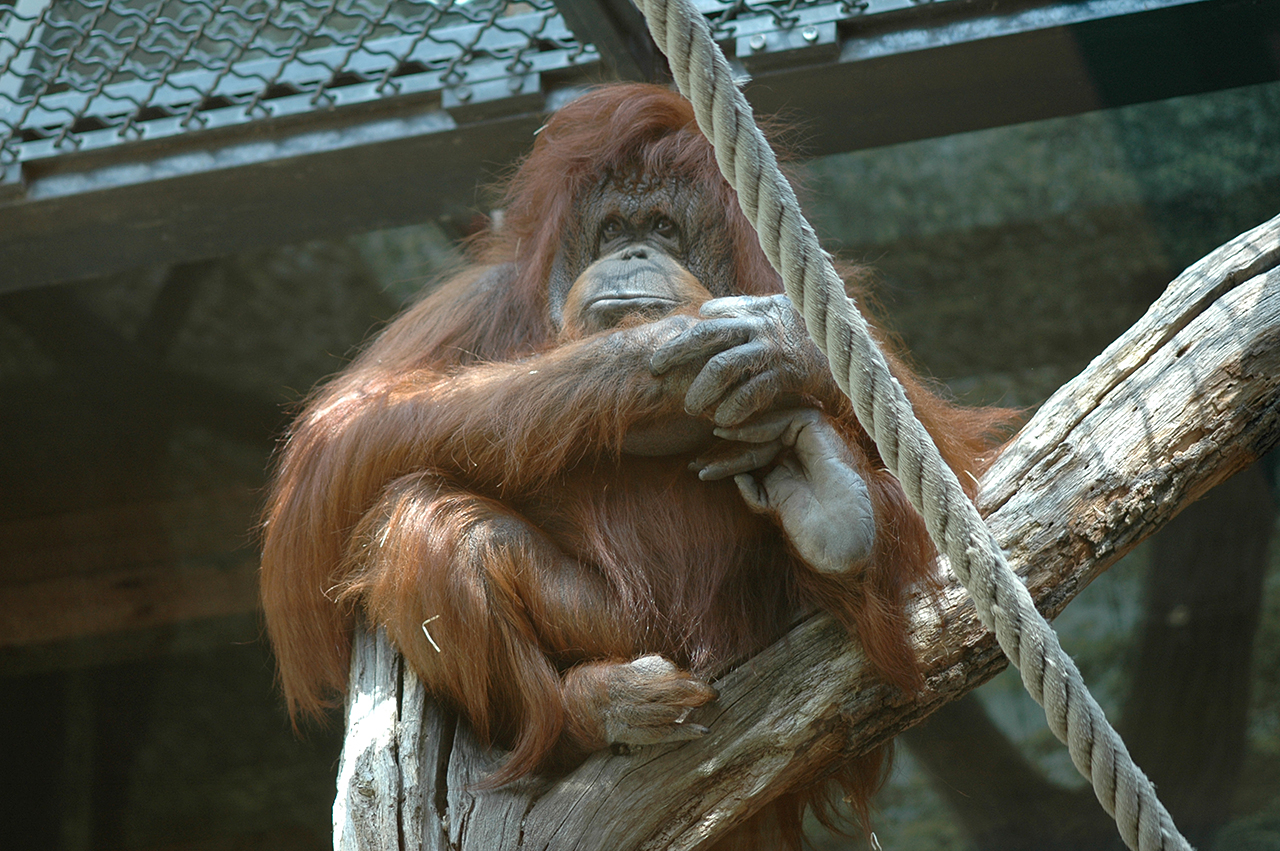Nénette
The star of Nicolas Philibert’s entrancing 67-minute documentary, Nénette, is a 40-year-old orangutan who lives in a deluxe tank at the Jardin des Plantes in Paris. She is large, arthritic, and stupendously hairy — her fur appears tinged with copper — and, above all, sad-looking. Her days are spent shoving fistfuls of hay into her mouth, methodically removing bottle caps in order to sip an assortment of beverages, hiding under quilts, and staring glumly at her visitors. Nénette came to France from Borneo in the early 1970s; and the Jardin’s modest zoo, which is nestled amid the far larger and more famous botanical garden, is the only home she’s ever known.
Philibert’s film finds a rather contemplative creature. Her mood complements his. The camera sits at clever angles taking in her three housemates, one of whom is her son, Tubo. Outside the frame, visitors speculate, in various languages, about everything from Nénette and Tubo’s moral well-being and anatomy (how many breasts do they have?) to their gender (he’s commonly referred to as “she’’; and to be fair, his magenta bowl-cut resembles one that the esteemed French director Agnès Varda has been wearing for years). The head zookeepers discuss, with each other and once with a visitor, the habits, back story, psychology, and physical condition of the clan. Some of what they say is surprising. No one, for instance, seems to know whether Nénette is menopausal.
Philibert never matches the stream of voices with an actual mouth. People are reflections in glass, audio commentary without a physical corollary. This is as it should be since whom they’ve come to watch or are paid to look after are far more interesting. The placement of the camera also proves as bright an egalitarian choice as, say, holing up for a year at a country schoolhouse, as Philibert did in 2002’s To Be and to Have, one of France’s most popular documentaries.
Beyond receiving permission to film at the Jardin, Philibert doesn’t appear to have any glorified access. The camera remains on the spectator’s side of the glass. Often it gets close enough to sustain the illusion of an evaporated partition. The zoo — at Nénette’s corner in particular — seems very much as it would on most other days. Both the steamed glass of some parts of the tank and the requirement to stare up from low angles are normal. Philibert is clever enough to glean, in the angles and foggy glass, the potential for art. The many long glances up at Nénette and company contribute a dimension of wonder and admiration. But the mix of long takes and brisk, playfully assembled sequences imparts an air of caprice. Who said observation couldn’t include visual rhythm or montage?
The mutual watchfulness — the orangutan’s and the director’s — makes them kindred spirits. More often than her son or the tank’s two younger, more crowd-pleasing residents, it’s Nénette who’s shown looking out at the strangers staring in at her, doing so with the sort of blank naturalism that’s made Isabelle Huppert an international treasure.
